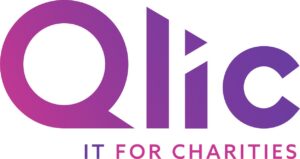In today’s digital landscape, cloud computing has become the cornerstone of modern operations. It has completely revolutionised how organisations manage and store their data, run applications, and scale their IT infrastructure. For charities, leveraging the cloud can be a complete game-changer, allowing them to optimise their resources and streamline their processes to focus more on their core mission.
However, the world of cloud computing for charities is not one-size-fits-all. The terms “multi cloud” and “hybrid cloud” are often thrown around interchangeably, causing confusion among organisations. It’s essential to identify that although the two concepts share some similarities, they differ significantly in their approaches and capabilities. We will help you understand the difference between hybrid and multi cloud architectures, enabling you to make informed decisions about the most suitable cloud solution for your charity’s specific requirements.
Let’s find out how you can navigate the multi cloud and hybrid cloud landscapes to discover which one holds the key to unlocking your charity’s full potential.

Understanding Multi Cloud and Hybrid Cloud Computing
What is Multi Cloud Computing?
Multi cloud computing is a strategic approach that allows charities to leverage the services of multiple cloud providers to meet their specific needs. Unlike traditional single-cloud solutions, multi cloud enables organisations to pick services from different providers such as AWS, Azure, or GCP based on their preferred requirements.
It also helps mitigate the risks of vendor lock-in, enhances redundancy, and ensures continuity. Multi cloud environments typically involve a mix of public, private, and hybrid clouds, seamlessly integrated to create a unified ecosystem. This environment addresses data privacy, compliance, and performance requirements while also offering a wide range of cloud services like computing resources, storage, databases, and more. Adopting multi cloud computing can be a strategic move, especially in the context of charity cloud migration. It allows charities to harness the power of multiple cloud providers to better serve their mission and beneficiaries.
What are the Benefits of Multi Cloud Computing?
Multi cloud computing offers a range of benefits for charities, making it an attractive strategy in today’s dynamic landscape. Here are some key benefits of multi cloud computing:
- Diverse Services from Different Providers: Multi cloud allows you to tap into a wide range of services from various cloud providers. This diversity enables charities to choose the best-suited solutions.
- Reduced Vendor Lock-In: With multi cloud, organisations are no longer tied to a single provider, reducing the risk of vendor lock-in.
- Enhanced Resilience and Redundancy: By distributing resources across multiple cloud providers and regions, multi cloud architectures enhance resilience and redundancy. If there was a service disruption from one provider, critical operations can seamlessly switch to another, ensuring continuity.
- Geographic Reach and Compliance: Multi cloud facilitates compliance with data laws and regulations by enabling organisations to host data and applications in specific geographic regions.
- Optimisation and Cost Efficiency: Charities can optimise costs by selecting cost-effective services and leveraging competitive pricing among providers.
- Increased Performance and Workload Segmentation: Through multi cloud deployment you can allocate workloads strategically and enhance overall system performance.
- Enhanced Security and Disaster Recovery: Distributing data and applications across multiple cloud providers enhances security through redundancy. In the event of a security breach, the organisation can recover data and maintain operations with ease.
These benefits demonstrate how multi cloud computing can empower charities to make the most of their cloud infrastructure while addressing diverse needs and challenges.

What is Hybrid Cloud Computing?
One of the growing cloud solutions for charities is hybrid cloud computing. This refers to ia strategic approach that seamlessly merges two different cloud computing models: public and private clouds.
- Public Cloud: A public cloud is a cloud service offered by third-party providers like Amazon Web Services (AWS), Microsoft Azure, or Google Cloud Platform (GCP). These platforms allow organisations to access computing resources, storage, and applications over the internet. This is usually done on a pay-as-you-go basis.
- Private Cloud: A private cloud infrastructure is operated solely for one organisation. It can be hosted on-premises or by a third-party provider. Private clouds offer greater control, security, and customisation for the organisation.
Hybrid cloud computing combines these two cloud models, allowing organisations to integrate and manage applications, data, and workloads across a combination of on-premises resources, private clouds, and public clouds. This collaboration creates a unified and flexible computing environment where data and applications can move seamlessly between the private and public cloud as needed.
The core concept of hybrid cloud is to leverage the advantages of both public and private clouds. Charities can run sensitive workloads on their private cloud when handling sensitive data, as well as utilising the public cloud’s scalability and cost-efficiency for less sensitive tasks. Hybrid cloud environments can be configured in various ways, including integrating on-premises infrastructure with public cloud resources or creating a unified management platform.
What are the Benefits of Hybrid Cloud Computing?
Hybrid cloud computing offers a range of benefits that cater to the diverse needs of charities. Here are some examples of hybrid cloud benefits:
- Integration of Public and Private Clouds: Hybrid clouds seamlessly combines public and private clouds. This allows organisations to optimise workloads, resources, and data across both environments.
- Flexibility and Scalability: Organisations can scale resources up or down as needed, leveraging the public cloud’s elasticity while maintaining the control and customisation on the private cloud.
- Data and Application Portability: Hybrid cloud enables easy movement of data and applications between public and private components, promoting flexibility and avoiding vendor lock-in.
- Security and Control: Sensitive workloads can take place in the private cloud, while less sensitive tasks can take advantage of the public cloud’s robust security measures.
- Cost Efficiency: Hybrid cloud optimises resource allocation, reducing infrastructure costs and eliminating the need for overprovisioning.
- Compliance and Regulatory Requirements: Organisations can meet industry-specific compliance and regulatory standards by placing sensitive data in the private cloud, ensuring adherence to data protection laws.
- Disaster Recovery and Redundancy: Hybrid cloud offers enhanced disaster recovery capabilities and security measures to keep on top of cyber security trends.
These benefits show how hybrid cloud computing empowers organisations to strike a balance between security and flexibility, achieving cost-effective and resilient IT infrastructure solutions.
What are the Differences Between Multi Cloud and Hybrid Cloud?
When it comes to multi cloud vs hybrid cloud, the distinctions revolve around their approach and architectural composition.
Multi cloud emphasises the use of various cloud services from multiple providers, allowing organisations to pick and choose services independently to suit specific needs or goals. It offers flexibility and cost-efficiency but does not involve a private cloud component.
Whereas, hybrid cloud combines both public and private clouds into a unified system. This integration enables better control over data, robust security measures, and the ability to seamlessly adjust computing resources as needed. Hybrid cloud solutions are well-suited for charities that require a balance between the advantages of public and private cloud models while maintaining data security and control.
Which Cloud Solution is Right for Your Charity?
So what is it to be in the multi cloud vs hybrid cloud debate? Choosing the right cloud solution for your charity depends on your priorities and specific requirements. Let’s explore some examples:
Multi Cloud: Multi cloud strategies would most benefit charities looking to pick services from different providers to meet specific needs without being locked into one vendor’s solution. For example, if your charity requires advanced analytics, you can leverage Google Cloud’s machine learning services, while simultaneously utilising Amazon Web Services for storage. While this approach offers flexibility, it requires careful resource allocation and service management.
Hybrid Cloud: For charities seeking greater control over their data and usage, the hybrid cloud might be the ideal choice. This approach allows organisations to keep sensitive data private while using public clouds for less sensitive data. A charity handling sensitive donor information can securely store that data on a private cloud while using the cost-effective resources of a public cloud for other non-sensitive tasks.
Ultimately, the choice between the right cloud solution for your charity depends on your goals, budget constraints, and IT expertise. Assessing your priorities and understanding the implications of each approach will help you make an informed decision that aligns with your charity’s mission and objectives.

Final Thoughts
The choice between hybrid and multi cloud solutions can significantly impact the operations and success of your charity. As we’ve explored the difference between hybrid and multi cloud you can also see that there are specific benefits to each approach.
Hybrid cloud offers greater control over data and security. Charities can keep sensitive data privately while using the scalability of public clouds for non-sensitive tasks. This approach optimises costs, enhances data security, and ensures compliance with regulatory requirements.
Multi cloud empowers charities to pick services from different providers, tailoring their cloud environment to specific needs. While offering flexibility and innovation, it demands effective resource allocation and management to avoid complexities.
In both cases, cloud computing enables charities to enhance their operational efficiency, streamline processes, and focus on their core mission. Whether you opt for hybrid or multi cloud, embracing cloud technology can be a transformative step toward achieving your charity’s goals.
Do you want to know more about Cloud Computing?
At Qlic, we can assess what type of cloud computing could work best for your charity. Get in touch for a free consultation below.






